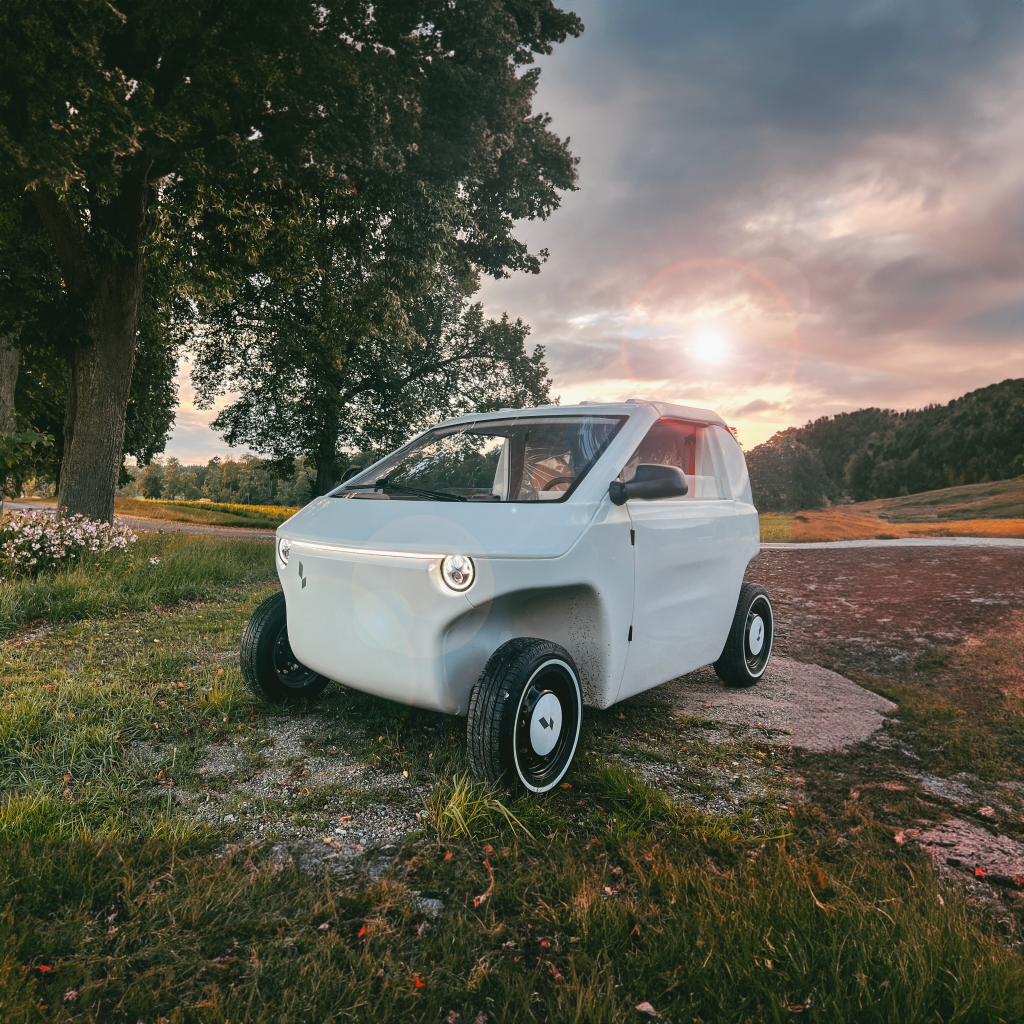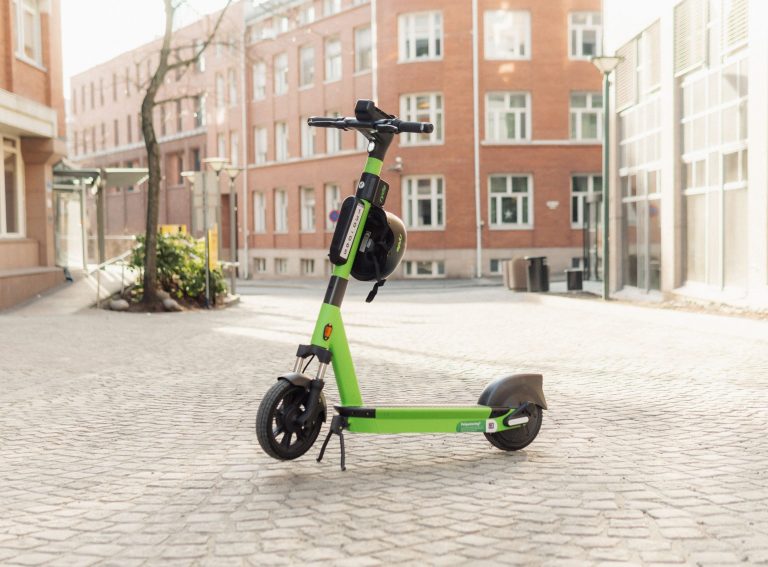I travelled to London to speak with Håkan Lutz – CEO of Swedish developer of light urban vehicles, Luvly. Beside us is London’s University of Chicago Booth School of Business where Håkan has been nominated to speak as one of 2024’s World Top 50 Innovators. The name of his session is – can we have a car and eat it?
“This is a twist on the British idiom ‘you can’t have your cake and eat it’” says Håkan. “But if you could, how could you? If the cake is a car? The answer is that the car as we know it is so resource consuming that we can’t continue using it. But if we change the car so that it uses just a small fraction of the resources of the car as we know it, then I think we can still drive them.”
The car conversation has been a particularly divisive topic over the last few years. Take the UK government’s ‘anti-motorist’ rhetoric, Amsterdam banning fossil fuel ‘glorifying’ advertisements from its metro system, and Paris recently tripling parking costs for SUVs.
What do you envision for the new mobility industry over the next six months? I asked Håkan. “Political turmoil,” he says.
“On the SUV bill, I think 95% of people living in Paris should have voted to hike their costs,” says Hakan. “They’re designed to travel 500 kilometres yet they cover only a fraction of that. We need to build vehicles that are actually designed for what we use them for.
“On a personal basis, the decision to abandon “the car” may be very difficult – “the car” has become so much more than a means of transportation, it’s an expression of self, of success, of group belonging, of wealth, and so on. But on a political, societal basis, it should be straightforward! When the choice is between “everybody should have the right to excess consumption that ruins our biotope” and “no, wait, nobody should have that right, including me”, it is easier. Of course no one should have that right!”
The Luvly O
Luvly has designed its prototype the Luvly O to showcase how the role of cars in cities can be transformed with cheaper and sustainable solutions.
Weighing at under 400 kilograms, the Luvly O can transport two people up to speeds of 90 km/h with an energy consumption from production, shipping and distribution that’s 80% lower than standard electric cars.
We’re careful not to call the Luvly O a ‘microcar’ – a term which Håkan believes misleads people into thinking light urban vehicles must be small. In fact, the Luvly O is the same size as a first generation smart car, comes loaded with safety tech and has a trunk space of up to 269 litres.

Tens of millions of cars are produced every single year and in 2023 the number was 94 million. For a small company like Luvly to make a real dent in traditional cars on the road, Håkan says it’s not economically feasible to produce each one.
So the Swedish company’s devised solution is its patented ‘slow formula racing tech’ to build a strong, light chassis made of high-tech thermal plastic which can be licensed to anybody who wants to build a vehicle using the platform.
“In order to build a light vehicle safely, you need to construct a strong safety cell which doesn’t weigh a lot, and it needs to have crumple zones that decelerate at a humanly acceptable rate in case you crash.
“This has been successfully done in F1 cars that have a chassis from a sandwich composite structure protected by energy absorption structures which are only built to absorb energy. Those are cars built for 400 km/h and need to protect people from extremely violent crashes.
“We’ve taken that fundamental structure and simplified it.”
The adaptive platform can be used to create vehicles that are bigger than the Luvly O or serve other purposes like carrying goods or reaching higher speeds. What is built on the platform could be something that looks entirely different to Luvly’s initial prototype.
“The personal freedom to pollute”
There’s one theme that continues to emerge from the debate on cars: personal freedom, according to Håkan.
“The majority of trips that take place within cities hold one or sometimes two passengers,” Håkan says. “In these cases, cars should be banned because of their wastefulness and our global needs.
“Yes, you limit personal freedom but it’s the personal freedom to pollute. Not the personal freedom to move, not the personal freedom to utilise the services that a vehicle delivers.”
Spinning the argument on its head, Håkan believes that freedom is actually increased by taking measures to swap out cars for greener vehicles because drivers can enjoy all the same services and have cleaner air and quieter streets.
“I fear I talk far too much about the necessity of reducing emissions and far too little about the love we have for cars as a company. We’re doing this not because we hate cars and want to get rid of them, but because we want to be able to keep them.
“Seeing it as a way to gain freedom and not limit freedom is the truthful way to see it.”





